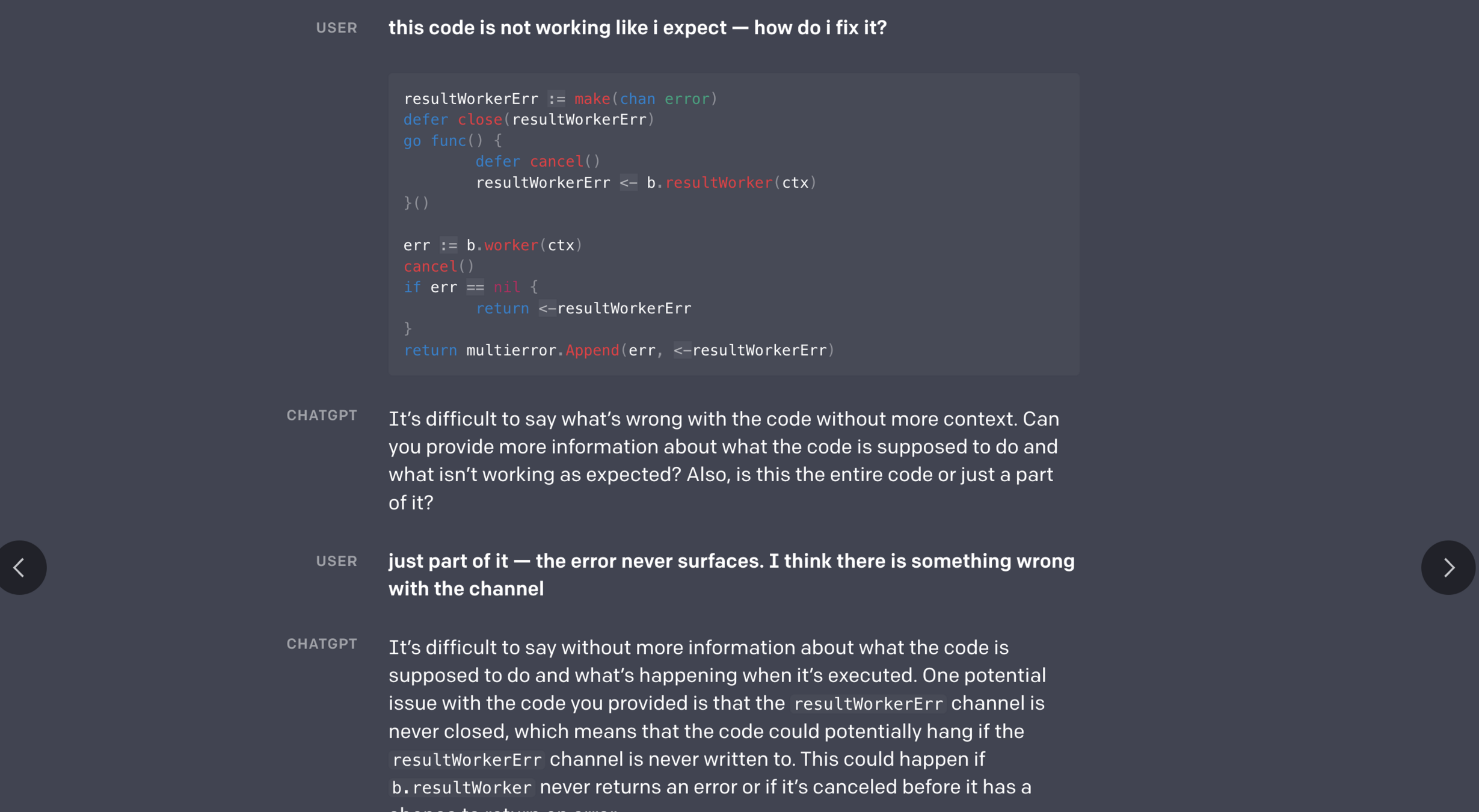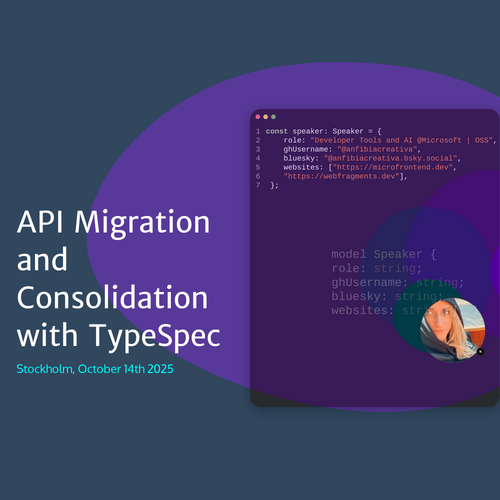Designing e2e fully distributed frontend systems with UX and DX in mind.
Natalia Venditto| anfibiacreativa

Principal JavaScript DX Lead Microsoft Azure
GDE for Angular and Web Technologies (Web Performance)
Oganizational Reasons
WHY DO WE DISTRIBUTE SYSTEMS?
@anfibiacreativa
Infrastructure
WHY DO WE DISTRIBUTE SYSTEMS?
@anfibiacreativa
HIGH-AVAILABILITY
REDUNDANCY/DR
GLOBAL DISTRIBUTION
SCALABILITY/ELASTICITY
WHY DO WE DECOUPLE THE APPLICATION LAYER?
KNOWLEDGE SILOS
SLOW TIME TO VALUE
TECHNICAL DEBT
INABILITY TO INNOVATE
INTERDEPENDENCIES
(RUNTIME) PERFORMANCE DEGRADATION
© Nathan Bodle | Unsplash.com
@anfibiacreativa
Including the frontend
@anfibiacreativa
Decoupling the Monolith
BUSINESS LOGIC (APP)
DATA LAYER
FRONTEND
© Antoine Pettiteville | Unsplash.com
SOLUTION
Independency
Team
Deployment
Can choose their stack, etc
Can be deployed and fails in isolation
Monolithic Backend
Monolithic Frontend
Monolithic Frontend
Micro-service
Micro-service
Micro-service
Typical monolith app decoupling process
(service, technology, data perspective)
API Gateway
A
APPLICATION
A
API-FIRST
Architect
@anfibiacreativa
Pushing the monolith split envelope even further, to very lean experiences that fit within performance budgets.
Use-case(s)
Architecture
Decision
Architecture
Decision
Tech-stack
Definition
Tech-stack
Definition
Development
Cycle
Development
Cycle
Deployment
Options
Deployment
Options
systems
user experiences
SPEC
We can't architect for USER experience, if we don't know the user.
@anfibiacreativa
© Pickled Stardust | Unsplash.com
HOT TAKE

frontend devs had NO
... influence
... decision-making power
... seat at the architecture table
@anfibiacreativa
@anfibiacreativa
© charlesdeluvio | Unsplash.com
- Cloud/PaaS/SaaS
- Serverless/Cloud-native
- Global distribution
- Micro-architectures
- Automated CI/CD pipelines
- Headless CMS
- API-First/BFF
- Multiple data models and dedicated storage (DBs)
@anfibiacreativa
- On Prem/Data Center - Fully managed
- Single Region
- Manual deployment pipelines
- Monolith Backends incl. content authoring
- SQL/Relational DBs
We can now build microservices but also micro-frontends!
Micro-frontends is a very misleading term.
@anfibiacreativa
© Pickled Stardust | Unsplash.com
HOT TAKE
D
DECOUPLED FRONTENDS
Type of Split
Homepage
Blogpage
© Jason Goodman| Unsplash.com
@anfibiacreativa
Horizontal
Vertical
Independent Deployability
PEOPLE
TECHNOLOGY
PROCESSES
Specialized team working on solving a concrete problem
Tech stack is chosen according to the team skills and the specific use-case
Processes are simplified to enable each team independently, based off of technology and requirements
Organizational Performance
Setup
Implement
Integrate
Build
Deploy
Publish
Design
(Spec)
Development Cycle.
Know what you need to do (job to be done) and setup for it: first rule of good DX. Ask the right questions
For what?
Asking the right questions to design a great system.
Where in?
With what?

To what?

How?

Where
to?

For
whom?


For whom?
That is where?
And browses how?
For what reason?
Click here to start.

@anfibiacreativa
@anfibiacreativa
BUSINESS LOGIC
DATA ACCESS
FRONTEND
© Amirali Mirhashemian | Unsplash.com
DATA STORAGE
INFRASTRUCTURE
All decisions are made by
non-frontend folks
@anfibiacreativa
© William Daigneault | Unsplash.com
HISTORICALLY
Architecture patterns
Data/API models
Infrastructure options
Full-stack apps patterns
Data/API models
Infrastructure options
All decisions (can be) made by
non-frontend folks
@anfibiacreativa
© William Daigneault | Unsplash.com
CLOUD OPTIONS LIKE PaaS, ARE MAKING IT POSSIBLE
If we want to build effective web distributed systems, we will need to change the perspective.
@anfibiacreativa
© Pickled Stardust | Unsplash.com
HOT TAKE
For what?
We are failing at asking and answering the most essential questions for DX and UX.
Where in?
For
whom?


Business Unit
Dev Team
End-user
The where in: where our team operates
© Hervet | Unsplash.com
@anfibiacreativa
© Clay Banks | Unsplash.com
@anfibiacreativa
© Hal Gaywood | Unsplash.com
@anfibiacreativa
© NASA | Unsplash.com
@anfibiacreativa
https://hbr.org/2016/11/why-diverse-teams-are-smarter#:~:text=The%20researchers%20found%20that%20individuals,published%20in%20the%20journal%20PNAS.
Diverse teams are smarter.
@anfibiacreativa
© Pickled Stardust | Unsplash.com
HOT TAKE
© Martin Sanchez | Unsplash.com
@anfibiacreativa
@anfibiacreativa
2007
2011
2015
2019
2022
250 M
750 M
1,250 M
1000X
Growth
© Tyler Lastovich | Unsplash.com
28%
iPhone*
*worldwide,
not necessarily the latest iPhone
@anfibiacreativa
14% in LATAM
16% in APAC
@anfibiacreativa
Know your users and what they have at hand
Baseline price
EU
Critical path budget
200
Kbs
~150
@anfibiacreativa
End-user bounce rate probability increase
< 1s > 3s
32%
< 1s > 5s
90%
*Financial institutions sites in the US average 2.2s
@anfibiacreativa
https://www.thinkwithgoogle.com/marketing-strategies/app-and-mobile/mobile-page-speed-new-industry-benchmarks/
Best practices for request and assets count
Max. on average
50
Total weight of assets
~3Mb

IT DEPENDS.
Jamstack sites can be an entire micro-fronted split
APIS
MARKDOWN
JAVASCRIPT
@anfibiacreativa
© Michelle.com | Unsplash.com
Page types || Views
Homepage
Landing page
Blog page
User page
SPA + cached to CDN
Micro-services + Micro frontends (vertical split)
SSG
SSR
Data Request
AT BUILDTIME
Data Request
ON THE FLY
pattern, tech stack, DB & APIs per page/view type mapping to use-case
Data Request
AT RUNTIME
@anfibiacreativa
(Containerized) Microservice Node App.
Serverless Func. (Origin)
Edge Computing/Composable
API Management and Cache Layer
The horizontal split obsession
Homepage
Userpage







Challenges of horizontal split (dealt by indep. teams)
KNOWLEDGE RAMP
STATE MANAGEMENT
DATA ARCHITECTURE
GOVERNANCE/ENFORCEMENT
VERSION SKEW
ORCHESTRATION
© Brad West | Unsplash.com
@anfibiacreativa
UX CONSISTENCY
ROUTING
const ModuleFederationPlugin = require("webpack/lib/container/ModuleFederationPlugin");
module.exports = {
output: {
uniqueName: "host_name"
},
plugins: [
new ModuleFederationPlugin({
name: "host",
remotes: {
'remote1': "remote1"
},
library: { type: "var", name: "host_name" },
filename: "remoteEntry.js",
shared: [
// other advanced options include requiredVersion, shareScope, etc
"@anfibiacreativa/styles/styles.css",
{"@angular/core": { singleton: true, strictVersion: true }},
{"@angular/common": { singleton: true, strictVersion: true }},
{"@angular/router": { singleton: true, strictVersion: true }}
]
})
],
};@anfibiacreativa
Remote
shareScope
Host Runtime
Container
provided modules
exposed modules
consumed modules
version check
version check
version def
- Fate-sharing
- Version-skew
- No e2e testing in consolidation
- Challenging state
management
Independent deployability (horizontal split) without governance, introduces more problems than it solves.
@anfibiacreativa
© Pickled Stardust | Unsplash.com
HOT TAKE
I'm not saying JavaScript is bad, but...
- Too much JavaScript, is bad
- No-coverage JavaScript, is bad
- Using JavaScript where you can use HTML or CSS, is bad
@anfibiacreativa
Recommendations.
@anfibiacreativa
© Ronak Balobobhai| Unsplash.com
@anfibiacreativa
When possible...
Use new generation frontend frameworks.
Stick to web platform APIs and web standards.
Async or defer load, consider the critical path.
Tree-shake, bundle consciously and eliminate dead code.
Always!
Define and respect your performance budget.
What are the new generation of full-stack frameworks?
Hybrid >SSR
Island Architecture
Homepage
Userpage
© Ahmed Yaaniu| Unsplash.com
@anfibiacreativa
instead of a multi-framework horizontal split
Partial Hydration
Frameworks that support it
Homepage
- No need for a shell
- Every region is hydrated independently
- Consolidated state management
@anfibiacreativa



Web-standards based HTML framework

- No compilation steps.
- HTML-first
- Progressive enhancement as FWA (pure serverless functions)

Resumability instead of hydration
As opposed to hydration (that replays all logic in the client), resumability picks up where the server left.
Implementing these patterns correctly, requires a mindshift.
@anfibiacreativa
© Pickled Stardust | Unsplash.com
HOT TAKE
Move all possible compute and composition to the cloud.
Edge Functions
Origin Functions
Compute that needs to be executed closer to the user.
Cold start + Latency
Acceptable for DB and data processing WF.
Not all of your apps workloads require execution at the edge (of the network).
@anfibiacreativa
© Pickled Stardust | Unsplash.com
HOT TAKE
@anfibiacreativa
https://www.emnify.com/blog/global-2g-3g-phase-out
While some countries in the world have sunset 2G and even 3G, most countries in Latin America and Europe plan to continue to service devices until late 2025 and even late 2026.
4G coverage 2021
85%
5G coverage 2021
25%
Preserve state with
cloud native options like Pub/Sub
Decoupled Frontend A
Pub/Sub
LocalStorage
input
event=`topic`
publish(event)
subscribe(event, callback)
subscribe(event, callback)
Decoupled Frontend B
Decoupled Frontend C
https://hbr.org/2016/11/why-diverse-teams-are-smarter#:~:text=The%20researchers%20found%20that%20individuals,published%20in%20the%20journal%20PNAS.
Frontends will be short-lived in the near future.
@anfibiacreativa
© Pickled Stardust | Unsplash.com
HOT TAKE
Faster iterations and development cycles.
Ever changing,
dynamic tooling and infra support.
Will be the long-lived core of all distributed systems, connecting cloud-native and serverless apps to decoupled frontends.
APIs
APIs can and will degrade runtime performance
- Specify before executing
- Reduce payload to a min
- Implement e2e testing
- Use headers and caching to reduce roundtrips
- Learn to benefit from infra
- Choose your API pattern wisely
@anfibiacreativa
Particularly clientside!
Data-modeling skills are underrated.
@anfibiacreativa
© Pickled Stardust | Unsplash.com
HOT TAKE
Total global data estimated in 2025
200 Zb
© Chris Liverani | Unsplash.com
Relational
Document Stores
Key-Value
Graph
Spatial
Search Engines
Wide Column
Vector
Time-series

MySQL, PostgreSQL, SQL Server
Cosmos DB, MongoDB, Firebase, Firestore
Cloud BigTable
SpatiaLite, PostGIS
Redis, Memcached
Neo4js, Virtuoso
Elasticshearch, Solr, Algolia
MongoDB, Gremlin, Influx, Prometheus
Weaviate








Relational
Document Stores
Key-Value
Graph
Spatial
Search Engines
Wide Column
Vector
Time-series

AI Model Training, Advanced Search








Content Management, Banking, CRM, Resource Planning
Content Management, Fintech, Customization, Personalization
Session Management, Product recommendations, Caching
Fraud Detection, Recommendation Engines, Social Networks, Network Mapping
IoT use-cases (collecting data from devices), Trends and forecasting, Monitorization
Full-text content search
Logging, Geographic information, Reporting systems
Geomarketing, Supply chain optimization, Environmental Management
MACH
API-FIRST
CLOUD NATIVE BASED
MICRO-*(Services)
@anfibiacreativa
© Michelle.com | Unsplash.com
HEADLESS SaaS
https://machalliance.org/
If you wanna know more...
If we're building composable architectures, we know that APIs are the core of our system, and users are the number one priority.
We are enabled to write specs based on user stories and determine what and how our users will be able to accomplish while interacting with our decoupled system, regardless of who will implement and integrate the system, what's their setup and how they build, deploy or publish their distributed components.

You're worried about making it all work together (at dev time/env).
@anfibiacreativa
© Pickled Stardust | Unsplash.com
HOT TAKE
https://github.com/features/codespaces

Online developer environments can help...
- Providing execution context and runtime
- Integrating systems via proxys and forwarding
- Emulating environmental conditions of prod
- Simplifying setup and onboarding
@anfibiacreativa
Thank you.
@anfibiacreativa
e2e frontend distributed systems-design with UX-DX in mind
By Natalia Venditto
e2e frontend distributed systems-design with UX-DX in mind
- 989



